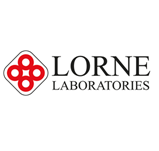Salmonella Detection & Identification
14 June 2019

Salmonella is one of the most well-known causes of food poisoning, most commonly associated with eggs. However, salmonella bacteria can come from a variety of places, and although in most cases the infection clears up by itself in a few days, in severe cases it can be fatal. So read our quick guide to discover where salmonella is found, how to prevent it, and the testing process using Febrile Antigen Kits.
What is Salmonella?
Salmonella is a bacterial disease that affects your intestines. The bacteria are most commonly found in the gut of humans and animals and are shed through faeces. Humans are most commonly infected through contaminated water or food.
The most common symptoms of salmonella are diarrhoea, fever, and abdominal cramps. Other symptoms include nausea, vomiting, chills, a headache, and blood in the stool. However, some people have no symptoms at all.
Types of Salmonella
There are two types of salmonella bacteria:
- Typhoidal salmonella, which can cause typhoid fever or paratyphoid fever
- Non-typoidal salmonella, which incorporates all other strains of salmonella
Where is Salmonella Found?
Salmonella bacteria are often found in the gut of farm animals. For this reason, salmonella most often comes from raw meat, undercooked poulty, eggs, and unpasteurised milk. However, other food such as vegetables, fruit, and fish can become contaminated through infected faeces.
Salmonella can also be spread from person to person through poor hygiene, or from pets including dogs, cats, birds, and reptiles.
The Dangers of Salmonella
Most healthy people will recover in a few days without treatment, however in some cases people can get dehydrated through loss of fluids from diarrhoea, and may need medical attention.
A small number of people can also end up developing reactive arthritis, which leads to pain in the joints, pain while urinating, and sore and itchy eyes that can last for several months, however it will usually resolve within a year.
If the salmonella infection gets into your blood, it can infect the body’s tissues including around the brain and spinal cord, the lining of your heart, bones and bone marrow, or the lining of your blood vessels, which can lead to serious diseases. This can lead to serious, life-threatening infections such as meningitis if it infects the brain or spinal cord, osteomyelitis if it infects the bones, or septic arthritis if it infects a joint.
How to Prevent Salmonella
You can cut your risk of contracting salmonella by taking the following steps:
- Thoroughly cook poultry, meat and eggs
- Don’t let raw meat or poultry come into contact with other food, particularly food that does not require cooking such as salad
- Avoid food that contains raw egg or unpasteurised milk
- Wash your hands before eating and preparing food, and after going to the toilet, changing a baby’s nappy, handling the bins or touching pets or other animals
- Wash your hands, cutting boards, work surfaces and utensils after preparing raw meat or poultry
The Testing Process for Salmonella
Diagnosing salmonella in a patient requires testing a stool or blood sample. Water and food products can also be tested for the salmonella bacteria. Once the sample has been taken, it is sent off to the laboratory where it is cultured. If salmonella bacteria grow, the diagnosis is confirmed.
Lorne Labs provide a Salmonella Paratyphi BO febrile antigen kit in order to test samples for the salmonella bacteria. The antigens are suspensions of killed bacteria, stained red or blue to enhance the reading of agglutination (clumping) tests.
The genus Salmonella has three major antigens used for diagnosis and detection, known as flagellar (heat labile), somatic (cell wall) and surface. In the Salmonella Paratyphi BO febrile antigen kit, both flagella and somatic antigens can be detected. The red stained antigens are specific to the flagellar “H” antigens while the blue stained antigens are specific to the somatic “O” antigens. Additionally, suspensions of Proteus Ox2, Ox19 and OxK are used to detect Rickettsial antibodies.
< Back to blog list
Share




